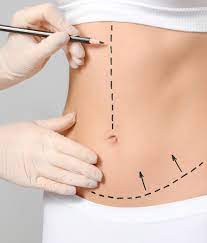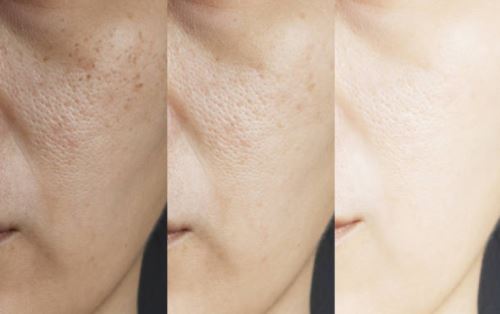Do My Breast Implants Need to Be Replaced Every 10 Years?

Breast augmentation is one of the most popular cosmetic surgeries worldwide. Women who choose breast augmentation in islamabad often have a variety of questions, with one of the most common being: "Do breast implants need to be replaced every 10 years?" The short answer is: not necessarily. However, the need for replacement depends on several factors, including the type of implant, individual health, and personal preferences. Let’s dive deeper into the topic to understand the nuances of implant longevity and care.
The 10-Year Myth: Origins and Realities
The idea that breast implants must be replaced every 10 years is rooted in historical trends and early implant technology. In the past, older implant models were more prone to complications such as rupture, leakage, or capsular contracture (the hardening of scar tissue around the implant). As a result, many surgeons advised patients to plan for replacement after a decade.
However, advancements in implant technology have significantly improved their durability and safety. Modern implants—both saline and silicone—are designed to last longer and withstand wear and tear. According to the American Society of Plastic Surgeons (ASPS), breast implants are not considered "lifetime devices," but there is no strict expiration date. Many women have implants that last 15, 20, or even 30 years without issues.
When Replacement May Be Necessary
While implants do not have a mandatory 10-year replacement schedule, certain circumstances may necessitate replacement or revision surgery:
Rupture or Leakage
Saline Implants: If a saline implant ruptures, the sterile saltwater inside will be absorbed by the body, and the breast will visibly deflate. This makes it easy to detect a rupture.
Silicone Implants: Modern silicone implants are made with cohesive gel that stays in place even if the outer shell breaks. This type of rupture, often called a "silent rupture," may not be immediately noticeable and might require imaging, such as an MRI or ultrasound, for detection.
Capsular Contracture
Capsular contracture occurs when the scar tissue around the implant tightens, causing discomfort, distortion, or hardening of the breast. This condition can occur at any time and may require corrective surgery.
Aesthetic Changes
Over time, natural aging, weight fluctuations, and pregnancy can alter the appearance of the breasts. Some women choose to replace their implants to adjust their size, shape, or position to match their current aesthetic preferences.
Changes in Health or Lifestyle
Personal health changes, such as a diagnosis of breast cancer, or shifts in lifestyle priorities may lead some women to remove or replace their implants.
Manufacturer Recommendations
Certain implants may come with specific guidelines or warranties that suggest periodic check-ups or replacement after a certain period.
How to Extend the Life of Your Implants
To maximize the longevity of breast implants, follow these best practices:
Regular Check-Ups
Schedule routine visits with your plastic surgeon to monitor the condition of your implants. Many surgeons recommend imaging, such as an MRI or ultrasound, every few years for silicone implants to check for silent ruptures.
Healthy Lifestyle
Maintaining a stable weight, exercising regularly, and avoiding smoking can help preserve the overall health of your breasts and minimize complications.
Monitor for Changes
Be vigilant for any changes in the look or feel of your breasts, such as lumps, asymmetry, or discomfort. Promptly report these to your doctor.
Understand Your Warranty
Many implant manufacturers offer warranties that cover certain complications, such as rupture or capsular contracture. Familiarize yourself with the terms of your warranty and keep records of your surgery.
Signs That You May Need Replacement
Even if your implants are functioning well beyond 10 years, there are some signs that might indicate the need for replacement:
Sudden changes in breast shape or size.
Persistent pain or discomfort.
Visible rippling or deformities.
Hardening or tightness in the breast.
Unexplained lumps or swelling.
If you experience any of these symptoms, consult your plastic surgeon for an evaluation.
The Psychological Aspect of Implant Replacement
For many women, breast implants are more than a physical change; they’re tied to confidence and self-image. Deciding to replace or remove implants can bring up a range of emotions. Open communication with your surgeon and support from loved ones can help navigate this process.
It’s also worth noting that some women choose to remove their implants entirely without replacement. This decision, known as "explant surgery," is becoming more common and may be driven by health concerns, personal preferences, or the desire for a more natural look.
The Cost of Replacement Surgery
The cost of replacing breast implants can vary widely depending on factors such as:
The type of implant
The complexity of the procedure
The surgeon’s expertise
Geographic location
It’s important to budget for potential future surgeries when considering breast augmentation. Some implant warranties may cover part of the replacement cost, particularly if it’s due to rupture or manufacturer defects.
The Role of Advancements in Implant Technology
As implant technology continues to evolve, newer options provide improved safety and longevity. Some of the latest innovations include:
Highly Cohesive Silicone Gel ("Gummy Bear") Implants: These implants are less likely to leak and maintain their shape better over time.
Textured Implants: Designed to reduce the risk of capsular contracture, although they come with their own risks.
Improved Manufacturing Techniques: Enhanced shell durability reduces the likelihood of rupture.
Discuss these advancements with your surgeon to determine the best option for your needs.
Final Thoughts
Breast implants in islamabad do not come with a set expiration date, and the 10-year replacement rule is more of a guideline than a strict requirement. With proper care and monitoring, many women enjoy their implants for decades without issues. However, being informed about potential complications and maintaining regular check-ups with your surgeon are essential for ensuring long-term satisfaction and safety.
Note: IndiBlogHub features both user-submitted and editorial content. We do not verify third-party contributions. Read our Disclaimer and Privacy Policyfor details.







